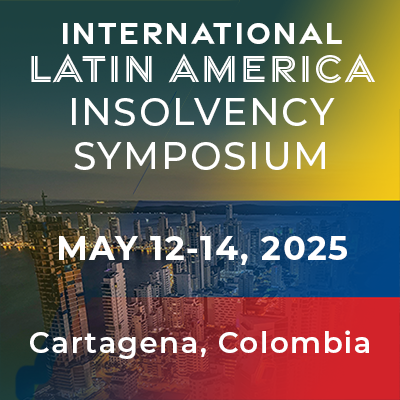| |
| |
| vol 20, num 1 | April, 2025 |
| |
|
|
| |
|
|
|
|
|
| |
| Co-Chairs Corner |
| ABI’s Real Estate Committee started off its 2025 webinar series with a bang, interviewing Brandon Svec with CoStar Group for a Commercial Real Estate Economic Outlook. Stay tuned for announcements regarding the section’s additional webinars still to come this year.
From March 26-28, 2025, ABI held its second annual Distressed Real Estate Symposium, this time in Newport Beach, Calif. The conference brings together lawyers and financial consultants to explore impending problems of higher vacancies and weakening cash flows affecting many commercial properties, as well as other timely issues related to real estate.
At the upcoming ABI Annual Spring Meeting, April 24-26, 2025, in Washington, D.C., the real estate committee will present a panel with the International Committee: “A Deep Dive into Cross-Border Real Estate Insolvencies: Evergrande band Beyond.” The Real Estate Committee also will host a happy hour in conjunction with the Spring Meeting on Friday, April 25, 2025, from 5:00-7:00 p.m., with the location to be announced.
|
| |
|
|
|
|
| |
|
| |
| How Do Courts Analyze Whether Senior Living, Other Health Care Facilities Qualify as Residential vs. Nonresidential Real Estate for Purposes of § 365(d), and Is There a Trend? |
| Section 365(d) of the Bankruptcy Code draws a clear distinction between residential and nonresidential leases, and those distinctions can impact a debtor’s rights. For example, § 365(d)(3) requires timely performance of post-petition obligations arising from “any unexpired lease of nonresidential real property,” and under § 365(d)(4), “an unexpired lease of nonresidential real property under which the debtor is the lessee” is deemed rejected if it is not assumed or rejected by the earlier of 120 days from the filing date or the date a plan is confirmed (subject to provisions permitting limited extensions). Residential leases are not
subject to these requirements.
However, § 365(d) does not define the terms “residential” and “nonresidential.” As a result, courts have relied on two substantially different approaches to determine whether a lease is residential or nonresidential for the purpose of § 365(d). In this article, we will discuss the two approaches — the “property test” and the “lease test” — and how courts have classified senior living and other health care facilities under each one. Further, we will discuss an alternative approach recently suggested by the U.S. Bankruptcy Court for the Western District of Pennsylvania — the totality-of-the-circumstances analysis — which appears more suitable for dual-purpose facilities like senior living and health care facilities.
|
| |
|
| |
|
|
|
| |
|
| |
| The Value of Options in CRE Restructuring |
| Established methods of determining value include computing the present value of observable cash flows and inferring value from other observable valuations — otherwise known as “relative” valuation or “comparables.”[1] But when observable cash flows or comparable valuations are not available, a third approach is to value optionality. In real estate, options abound, and it is worth thinking about how to analyze optionality in calculating value.
Options come in two forms, “PUTs” and “CALLs.” A PUT is the right to sell something, while a CALL is the right to buy something. Both transact at a “strike price,” or a price that is predetermined. Options are sold in exchange for a fee — the option “premium.” Buy (“long”) an option, pay the premium. Sell (“short”) an option, receive the premium. Buying an option is asymmetrically different from selling one. The buyer’s losses are capped at the cost of the option premium; the seller’s aren’t.
|
| |
|
|
|
|
| |
|
|
|
|
|
|
|
|
|
|
|
|
|
| |








